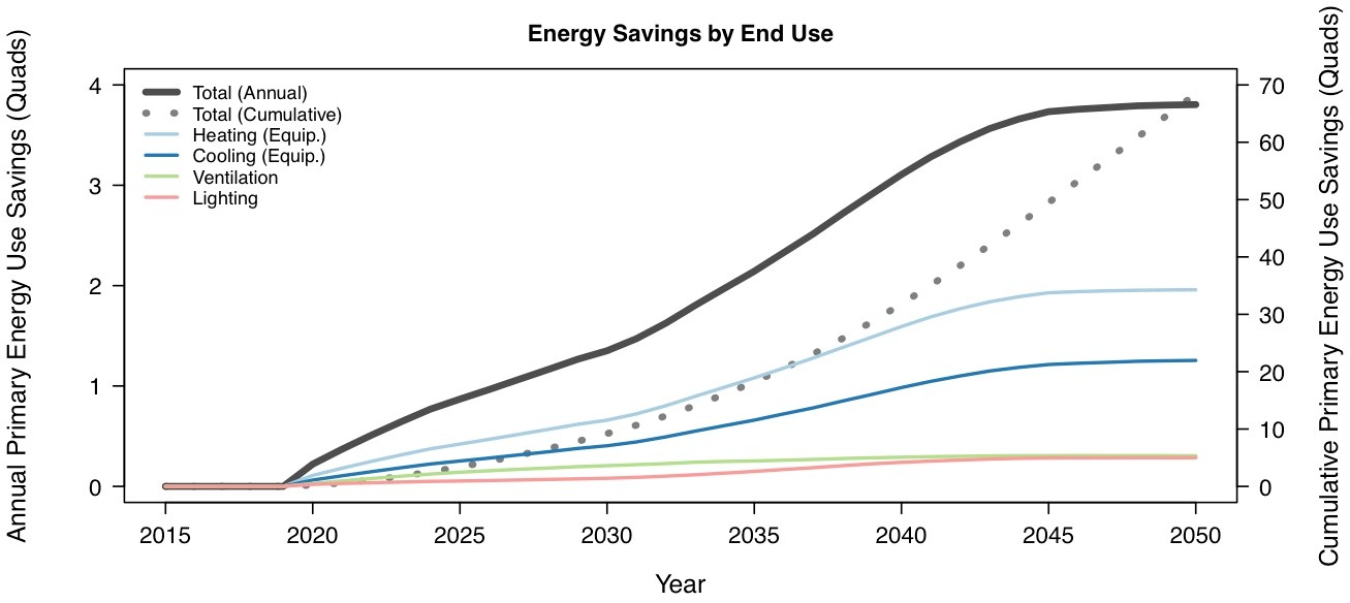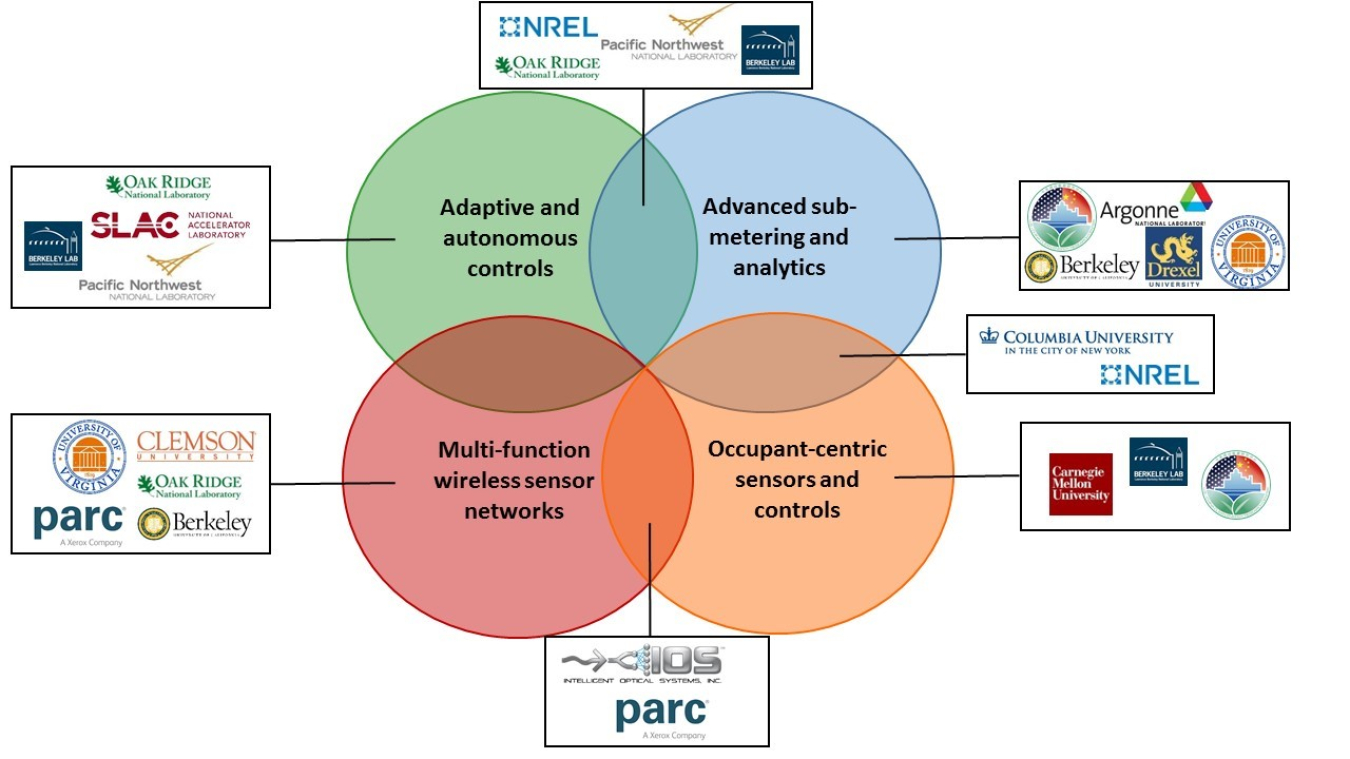
The BTO Sensors and Controls sub-program invests in R&D that will accelerate the transition that is occurring in buildings today from simple, reactive controls that are designed to only meet short-term thermal ventilation needs to optimized, whole-building controls designed to meet both energy efficiency and occupant comfort objectives.
The goal of these investments is to ensure an aggregated annual energy savings (~30%) from efficient building equipment and systems through correct implementation of monitoring and control systems that can optimize programmable settings, as well as detect and diagnose operational problems (Fernandez et al. 2017). An additional 10% savings in total building energy consumption is targeted through early-stage R&D in more sophisticated analytics and control strategies, including machine learning and model predictive control. These savings translate into 1.4 quads of savings in 2030 and 3.8 quads in 2050 across applicable end uses (Sofos and Langevin 2018).

The BTO sensors and controls portfolio is organized around the four interdependent, focus areas of multi-functional wireless sensor networks, advanced sub-metering and analytics, adaptive controls, and occupant-centric control strategies.
A two-pronged strategy is employed to meet these goals that consists of early-stage R&D in:
- Sensors and sub-meters: reducing the cost through automation of the configuration and calibration processes and long-term performance of wireless networks along with developing new sensing modalities (e.g., occupancy and building equipment health) and analytics
- Controls: developing and optimizing model-based and data-driven approaches over longer time periods (e.g., hours and days) and multiple spatial scales (e.g., occupant, whole-building), as well as incorporating additional inputs (e.g., occupancy patterns, weather forecasts)
To complement the portfolio of competitive and interdisciplinary, early-stage R&D projects, testing frameworks and procedures, along with curated datasets are being developed by the sub-program to support the R&D community at-large through common baselines to evaluate performance improvements and encourage additional innovation in advanced analytics and control strategies.
Advancements in interoperability are also being explored to complement stakeholder-led communication protocol, data tagging and modeling developments underway. Finally, the technological advancements made by the sub-program are being leveraged to inform BTO investments in transactive control methods for flexible building loads.

